Things to do in Beijing
Though Beijing still offers well-preserved glimpses into millennia of Chinese history, it is far more than a large-scale museum. Instead, eye-catching structures and modern architectural wonders are among the city's most visited attractions. These include the National Stadium, better known as the Bird's Nest, and the National Grand Theatre, known as the Eggshell. It is no surprise that some traditionalists believe the modern attractions detract from the city's ancient treasures, but many more enjoy the stark contrast.
However, the iconic historic Beijing sites remain the most popular. The Great Wall of China and the mysterious Forbidden City at the heart of Beijing compete for the title of the city's most visited attraction. Beihai Park and the Summer Palace are also immensely popular. For truly ancient history, travellers should visit the Zhoukoudian Cave, which boasts the largest collection of Homo Erectus fossils in the world. More recent history can be explored at the infamous Tiananmen Square or the Chairman Mao Mausoleum.
Being able to walk through some of the world's most ancient and modern attractions in a single day makes Beijing eternally captivating.
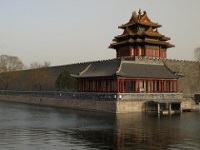
Forbidden City
The majestic Forbidden City is a historical precinct situated in the heart of Beijing. This UNESCO World Heritage Site has been declared the largest collection of preserved ancient…
Forbidden City
The majestic Forbidden City is a historical precinct situated in the heart of Beijing. This UNESCO World Heritage Site has been declared the largest collection of preserved ancient wooden structures in the world. The Forbidden City, called Gu Gong in Chinese, was the imperial palace during the Ming and Qing dynasties.
It is the biggest and best preserved complex of ancient buildings in China, and the largest palace complex in the world. Construction began in 1407, and for 500 years this inner sanctum was off limits to most of the world as the emperors lived in luxury, secluded from the masses and surrounded by their families, servants and members of court.
The Forbidden City has a permanent restoration squad working continuously to keep the more than 90 palaces and courtyards, 980 buildings and 8,728 rooms in perfect condition. Now open to all visitors, its museum is home to a priceless collection of ancient artefacts. The complex can get overrun so it is best to go early in the morning to fully appreciate the layout of the place without too many crowds.
Website en.dpm.org.cn
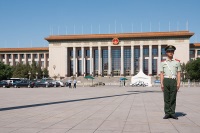
Tiananmen Square
The famous and distinct Tiananmen Square is at the heart of Beijing, a place of so many historic events. The largest city square in the world, it was a gathering place and site of …
Tiananmen Square
The famous and distinct Tiananmen Square is at the heart of Beijing, a place of so many historic events. The largest city square in the world, it was a gathering place and site of government officials during ancient imperial days. Major rallies took place in the Square during the Cultural Revolution, when Chairman Mao reviewed military parades up to a million strong. But the 1989 Tiananmen Square Massacre meant it has become a site of great political significance in modern history.
The square is surrounded by several monuments, some ancient and some modern, including the former gates to the Forbidden City, the Gate of Heavenly Peace and Qianmen, as well as the Chinese Revolution Museum and the Mao Mausoleum, where China's former leader lies preserved. There is also an underground walkway connecting Tiananmen Square with the Forbidden City. Like most big tourist attractions in China, it is best to try and go early in the day to avoid the masses, with the square open to visitors as early as 5am.
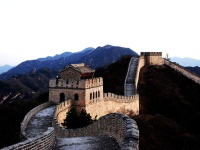
Great Wall of China
The Great Wall of China is a perennial favourite among tourists. Stretching some 4,000 miles (6,350km) and built in stages from the 7th century BC onwards, it snakes across the mou…
Great Wall of China
The Great Wall of China is a perennial favourite among tourists. Stretching some 4,000 miles (6,350km) and built in stages from the 7th century BC onwards, it snakes across the mountains and valleys of five provinces in northern China and originally served as a mammoth defensive bulwark against neighbouring Manchurian and Mongolian peoples.
Several sections of the wall, which has become the most prominent symbol of Chinese civilisation, can be viewed in the greater Beijing area. In Yanqing county, in northwest Beijing, is the 600-year-old Badaling Fortification, representative of the Ming dynasty sections of the Great Wall. Other sections can be seen at Jinshanling, Mutianyu and Simatai.
The more popular sections can be very crowded but, generally, if travellers walk a little way they can escape the worst of it. There are some wonderful stretches of the wall to hike, such as the roughly six-mile (10km) section between Jinshanling and Simatai, but visitors should be careful about setting off alone as parts of the wall are unstable and unsafe.
It's recommended that tourists take their own water and snacks and pack warm clothes if planning to go during winter, as temperatures at the wall can be freezing. There are countless vendors, but their goods are usually overpriced and of questionable quality. It is illegal to remove stone from the wall and Chinese authorities are clamping down on the practice.
Website www.mutianyugreatwall.net
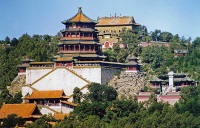
Summer Palace
The magnificent Summer Palace was built in 1750 by the Emperor Qianlong, and continued to be an imperial residence until the Empress Dowager Cixi died in 1908. It is the largest an…
Summer Palace
The magnificent Summer Palace was built in 1750 by the Emperor Qianlong, and continued to be an imperial residence until the Empress Dowager Cixi died in 1908. It is the largest and most well-preserved royal park in China, and has been declared a UNESCO World Heritage Site.
The palace and stunning gardens are open to visitors, who pass through a grand courtyard into the Hall of Benevolent Longevity, the Hall of Jade Ripples and the Hall of Joyful Longevity. Empress Cixi's private theatre in the Garden of Moral Harmony is a must see, as is the long corridor that skirts Kunming Lake's northern shoreline to reach the marble boat, an elaborate two-storey structure of finely carved stone and stained glass.
All in all, the Summer Palace boasts not only famously beautiful grounds but also 3,000 man-made ancient structures, including mansions, temples, pavilions, bridges and towers. Once a place for weary royals to relax, the Summer Palace is now a sanctuary for travellers and, although it can get crowded, it always seems calmer and cooler than the rest of the city.
Website www.summerpalace-china.com
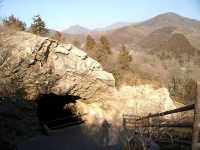
Zhoukoudian Cave
About 25 miles (40km) south of Beijing, in the Fangshan District, is the Zhoukoudian Cave, the source of the largest collection of Homo erectus fossils from any single site in the …
Zhoukoudian Cave
About 25 miles (40km) south of Beijing, in the Fangshan District, is the Zhoukoudian Cave, the source of the largest collection of Homo erectus fossils from any single site in the world. The fossils recovered from the cave represent about 40 individuals, most famous of which is a cranium element commonly known as the 'Peking Man', the world's earliest fire-using primitive man who lived between 200,000 and 700,000 years ago.
The Zhoukoudian site on Dragon Bone Hill has a comprehensive seven-room exhibition of fossils and artefacts depicting human evolution and the lifestyle of primitive humans. It showcases fossils from all over China, allowing visitors to compare the different lifestyles of the ancient communities that were discovered here.
Website www.zkd.cn
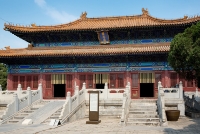
Tombs of the Ming Dynasty
Built by the emperors of the Ming Dynasty of China, the majority of surviving Ming tombs are clustered near Beijing and easily reached on short excursions out of the capital. Thirt…
Tombs of the Ming Dynasty
Built by the emperors of the Ming Dynasty of China, the majority of surviving Ming tombs are clustered near Beijing and easily reached on short excursions out of the capital. Thirteen emperors' mausoleums, dating from between 1368 and 1644 and collectively UNESCO-listed, can be seen in the Ming Tombs Scenic Area at the foot of Tianshou Mountain.
Currently only three of the tombs are open to the public (Chanling, Dingling and Zhaoling) but this is more than sufficient as all the tombs are similar in design and the three that can be explored are arguably the most interesting. The Changling Tomb is the largest, oldest and best preserved, looming majestically at the end of the Sacred Way. The Dingling Tomb is the only one which has been properly excavated but tragically many of the artefacts and the remains of the emperor and empresses entombed in the mausoleum were destroyed during the Cultural Revolution. Even so, the excavated Underground Palace in Dingling is fascinating and some magnificent artefacts can still be viewed.
Many operators in Beijing offer tours to the Ming Tombs, often combined with trips to the Great Wall and other nearby attractions. Visitors travelling independently will need to pay entry to each tomb separately.
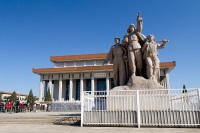
Chairman Mao Mausoleum
Although Chairman Mao Zedong requested to be cremated, his body was instead embalmed. After a supposed mishap during the process, a wax model was made as backup and it's unknown wh…
Chairman Mao Mausoleum
Although Chairman Mao Zedong requested to be cremated, his body was instead embalmed. After a supposed mishap during the process, a wax model was made as backup and it's unknown which version of the Great Helmsman is on display today at the Mausoleum. The Mausoleum itself was built in 1977 on the prior site of the Gate of China, the main gate of the Imperial City during the Ming and Qing dynasties. The tomb is on the first floor and on the second is a museum dedicated to other great communist leaders, including Mao himself. Those interested in visiting the Mausoleum can join the long line of visitors outside the building every day. Visitors should remember to dress respectfully and maintain silence in the mausoleum, as the site is a place of worship more than a tourist destination.
Website cpc.people.com.cn/GB/69112/113427/
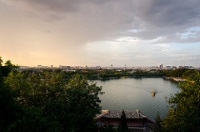
Beihai Park
A place of tranquillity and grand imperial beauty, the Beihai Park is one of the great attractions of Beijing. It's centrally located and close to the Forbidden City and Jingshan P…
Beihai Park
A place of tranquillity and grand imperial beauty, the Beihai Park is one of the great attractions of Beijing. It's centrally located and close to the Forbidden City and Jingshan Park, providing a peaceful, natural haven after a long morning of sightseeing. One of the oldest and best preserved imperial gardens in China, Beihai Park's history extends over 1,000 years to the ancient Liao dynasty, which ruled between 916 and 1125. Built up through five dynasties, the park is an emblem of old-world China, designed according to the ancient Chinese art of landscaped gardens with artificial hills, colourful pavilions and intricate temples.
Kublai Khan lived in what is now the Circular City of Beihai Park. The Tibetan-style White Dagoba, built in 1651 on Jade Island, is a landmark for both Beihai Park and Beijing, having been constructed on the suggestion of a famous Tibetan Lama priest, NaomuHan. Apart from the famous White Dagoba and the Circular City, landmarks within Beihai Park include Hao Pu Creek Garden, the Quiet Heart Studio, Nine-Dragon Screen and the Five-Dragon Pavilions. The Fangshan Restaurant, started nearly a century ago by royal chefs, is also worth a visit.
Website www.travelchinaguide.com/attraction/beijing/beihai.htm
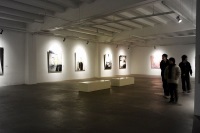
798 Space
Beijing's prominent art district is home to 798 Space, an art gallery housed in a former electronics factory that built components for China's first atomic bomb and early satellite…
798 Space
Beijing's prominent art district is home to 798 Space, an art gallery housed in a former electronics factory that built components for China's first atomic bomb and early satellites. Exhibiting the latest in contemporary Chinese art in its lofty viewing rooms, 798 Space is a visual delight for any traveller. Besides regular national and international exhibitions, 798 Space also hosts corporate and commercial events such as fashion shows, product launches, conferences and fairs. A film and video viewing area and a gallery bookshop are also housed in the gallery, as is a colourful little restaurant. The art precinct itself is dotted with avant-garde statues, charming coffee shops and noodle bars, and a plethora of other wonderful art galleries to visit.
Website www.798district.com
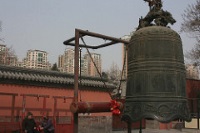
Great Bell Temple
The Qing Temple is home to the Ancient Bell Museum (Gu Zhong Bowuguan) and is a great stop for travellers en route to the Summer Palace. A 47-ton bell with a height of 22.7 feet (6…
Great Bell Temple
The Qing Temple is home to the Ancient Bell Museum (Gu Zhong Bowuguan) and is a great stop for travellers en route to the Summer Palace. A 47-ton bell with a height of 22.7 feet (6.9m) was transported to the original temple on ice sleds in 1743. It is inscribed with Buddhist Mantras on both the inside and outside and features over 227,000 characters.
The bell was often chosen by the emperors to pray for rain and blessings for the people of China, and was one of three projects that the Yongle Emperor of the Ming dynasty (1368-1644) commanded after reestablishing Beijing as the capital, the others being the Forbidden City and the Temple of Heaven. The bell is considered auspicious in Chinese tradition and is nowadays rung 108 times to begin the celebrations at grand ceremonies. There are a further 31 bells on display in the Ancient Bell Museum, most with tributes to various emperors inscribed on them.
The Underground City
Beijing's Underground City is a forgotten vast bomb shelter eight to 18 meters beneath the ancient capital's downtown area, built in case of nuclear attack. Aside from some rather …
The Underground City
Beijing's Underground City is a forgotten vast bomb shelter eight to 18 meters beneath the ancient capital's downtown area, built in case of nuclear attack. Aside from some rather odd recent additions, it features factories, restaurants, hospitals, schools, theatres and shops. There's even a mushroom farm to provide food easily cultivated in darkness. On Mao Zedong's orders, it was built from 1969 to 1979 by more than 300,000 local citizens including school children, mostly by hand. The tunnels were initially intended to accommodate all of Beijing's six million inhabitants upon completion. Winding for over 18 miles (30km) and covering an area of nearly 53 square miles (85 sq km), the underground City includes more than 1,000 anti-air raid structures.
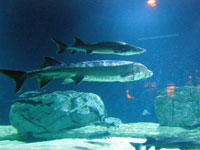
Beijing Aquarium
Located within the Beijing Zoo, the Beijing Aquarium is one of the world's largest inland aquariums. Its interactive exhibits provide an immersive experience that never fails to de…
Beijing Aquarium
Located within the Beijing Zoo, the Beijing Aquarium is one of the world's largest inland aquariums. Its interactive exhibits provide an immersive experience that never fails to delight, such as an imaginative Amazon rainforest, complete with piranhas and pandas, as well as an exquisite shark tank, dolphin shows and displays of rare and endangered fish. A boat from the canal south of the aquarium runs to the Summer Palace, giving visitors the opportunity to sightsee while en route to the attraction.
Website www.bj-sea.com
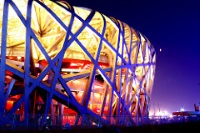
The Beijing National Stadium
The Beijing National Stadium, also known as the Bird's Nest due to its appearance, was the hub of the 2008 Summer Olympic Games, hosting all of the track and field events as well t…
The Beijing National Stadium
The Beijing National Stadium, also known as the Bird's Nest due to its appearance, was the hub of the 2008 Summer Olympic Games, hosting all of the track and field events as well the opening and closing ceremonies. The unique-looking supports make it the largest steel structure in the world, created using a web of steel frames converging in a grid formation. The visual effect is unique and impressive and it was designed to symbolise harmony between technology and nature. The stadium has reopened as a tourist attraction, and the public can tour the facilities, or visit the ski resort now housed inside during the Happy Snow season.
Website www.n-s.cn
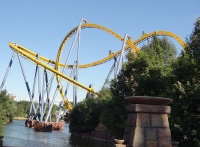
Happy Valley Amusement Park (Beijing Huanle Gu)
Happy Valley is a fantastic place to spend the day with or without the little ones. It features about 40 rides, an IMAX Theatre and even a shopping centre. It is similar in style a…
Happy Valley Amusement Park (Beijing Huanle Gu)
Happy Valley is a fantastic place to spend the day with or without the little ones. It features about 40 rides, an IMAX Theatre and even a shopping centre. It is similar in style and layout to Disneyland, featuring six theme parks: Fjord Forest, Atlantis, Happy Hour, the Aegean Sea, Lost Maya and Shangri-La. Atlantis is probably the favourite of these, with a massive palace built in its centre. But Happy Valley gets equally crowded on the weekends, with queues lasting up to three hours for rides. To avoid disappointment, visitors are advised to find out ahead of time whether the state-of-the-art roller coasters will be running as some rides close during quiet periods.
Website bj.happyvalley.cn
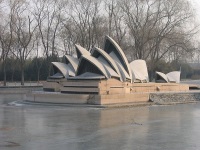
Beijing World Park
The Beijing World Park is must see on the itinerary of those travelling with children in Beijing. It features about 100 miniature models of some of the world's most famous tourist …
Beijing World Park
The Beijing World Park is must see on the itinerary of those travelling with children in Beijing. It features about 100 miniature models of some of the world's most famous tourist attractions from over 50 countries across the globe, and is designed to let visitors experience a trip around the world without ever having to leave Beijing. The sights include Egypt's Great Pyramids, France's Eiffel Tower, India's Taj Mahal, England's Stonehenge and New York City's Manhattan Island. The park is a great place for kids to learn and enjoy naming the attractions as they stroll through the replicas. Summer is the best time to visit Beijing World Park, as it's a venue designed for sunny weather.



